Hello everyone! Sorry for the delay, but this week’s Feijoada Friday is here! You had read the title right: Willys Dauphine. An American French car made in Brazil! Want to know the full story? After the jump!

Short after the opening of the Willys-Overland factory in Brazil in 1952 to assemble imported Jeeps, in 1958 they got permission from the GEIA (Grupo Executivo da Indústria Automobilística, Executive Group of the Automobile Industry) to produce the Renault Dauphine here, their first car. With only few models available to Brazilian drivers, the Dauphine “rivals” were only DKWs and Volkswagen Beetles. The Brazilian-made Dauphines were slightly different from their French cousins, with different hoods, bumpers (with a reinforcement bar) and the concave headlight lenses, instead of the most usual convex lenses.
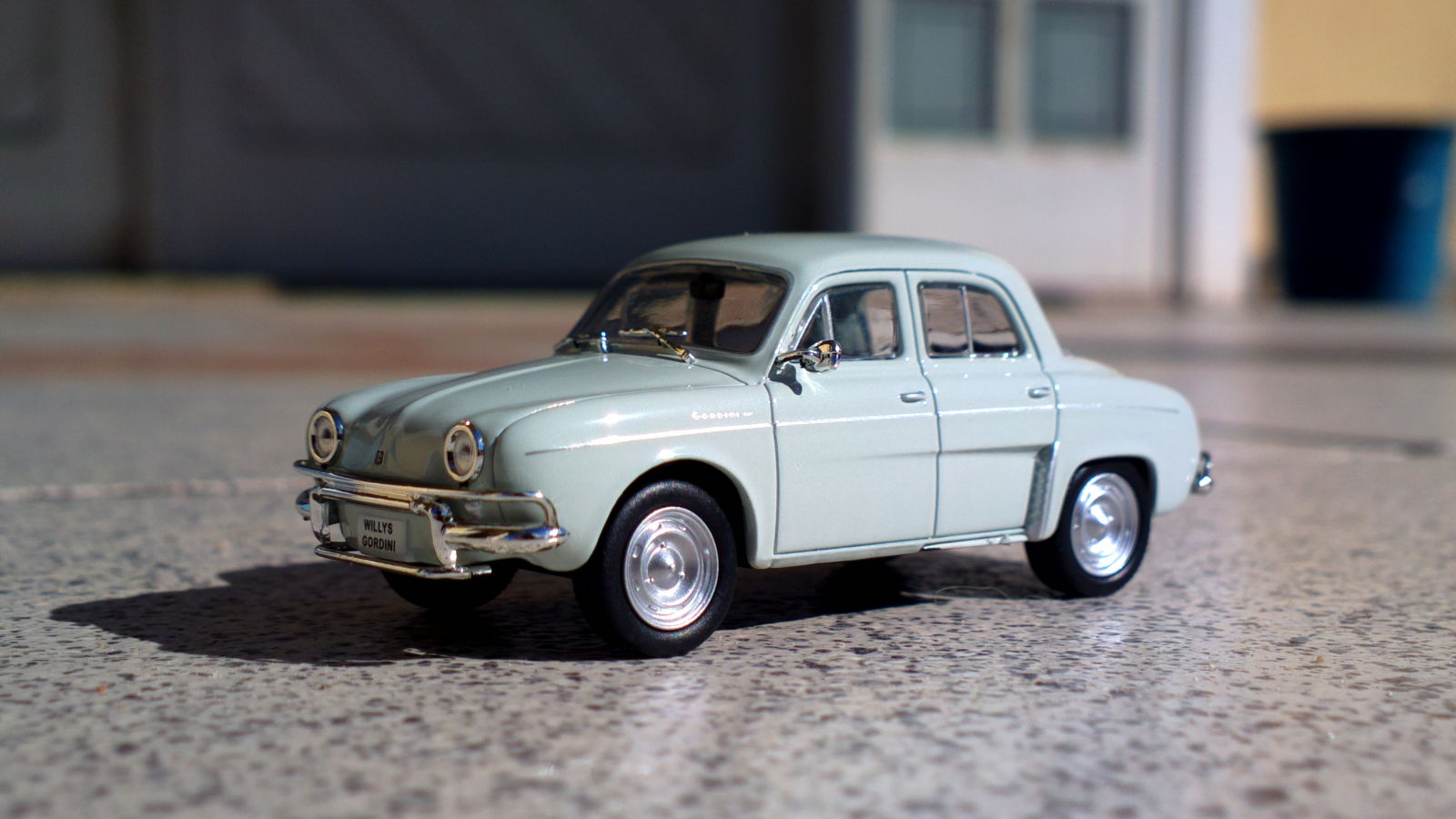
In the Brazilian début Willys claimed on the advertisements “a stable car with the power you demand”. Taking 35 seconds to reach 100 km/h I still can’t find where’s the power I demand... The engine was in the back, with only 845 cm³ and 26 cv, and the trunk was in the front. The spare was stashed in a separate slot, a “drawer” behind the license plate, so there was quite a lot of space for its diminute size. However, the air intake for the engine was placed inside the trunk, and it wasn’t rare for drivers to stop at the roadside because something in the trunk became stuck in the air intake...
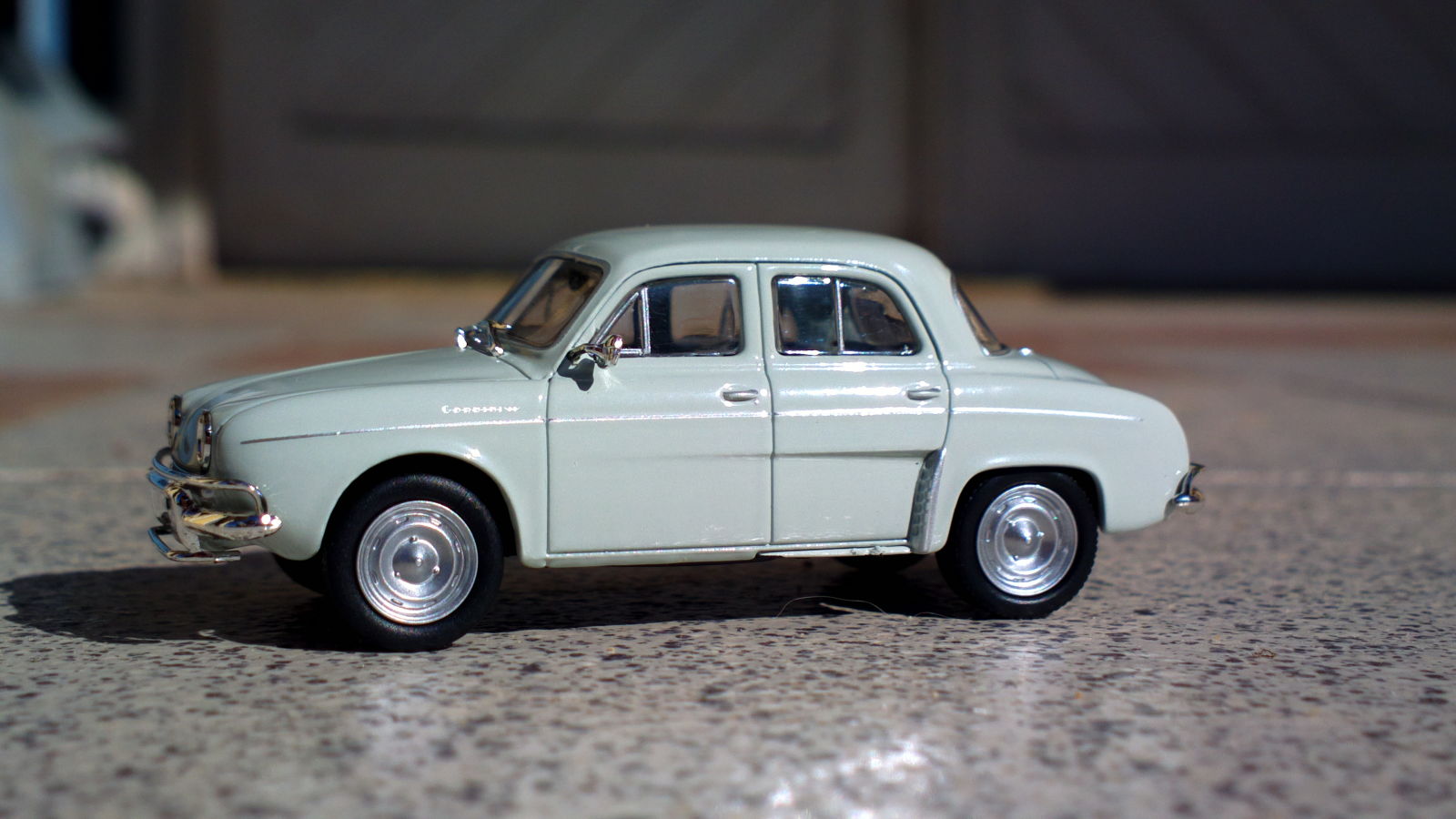
Other advertisements said this car was robust and strong. However, Brazilian drivers from the time that already had our caustic and acid sense of humour nicknamed this car “Leite Glória”, for a brand of powdered milk whose ads claimed “desmancha sem bater” (praising the quality of the product saying “dilutes without much mixing”. It was a play on words, since “desmanchar” can mean “to break” or “to be diluted”, and “bater” can mean “to crash” or “to mix”. So “desmancha sem bater” implied the car wasn’t as robust and strong as the campaigns claimed, destructing itself without the driver crashing!
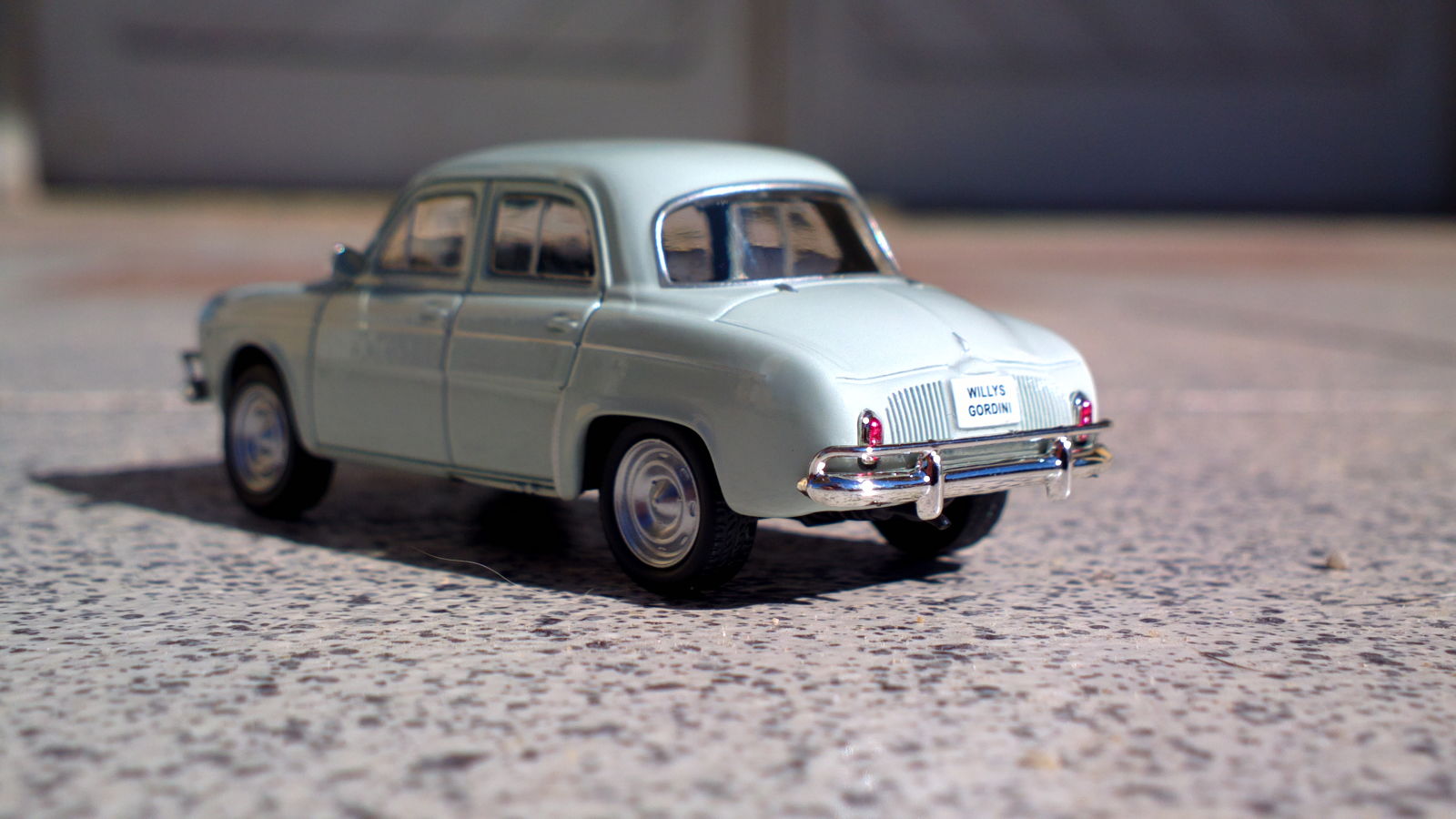
In 1962 the version this model is based upon was released: The Willys Gordini had mind-boggling 6 cv more! It may look like nothing, but the 0-100 km/h time fell to only 28 seconds, a full 7 seconds less! Not only this extra juice, the Gordini received an extra gear on the gearbox, so now the drivers could extract all 32 horses with four different gears. But, still, it is amazing how they managed to make 32 cv push this car at more than 120 km/h!
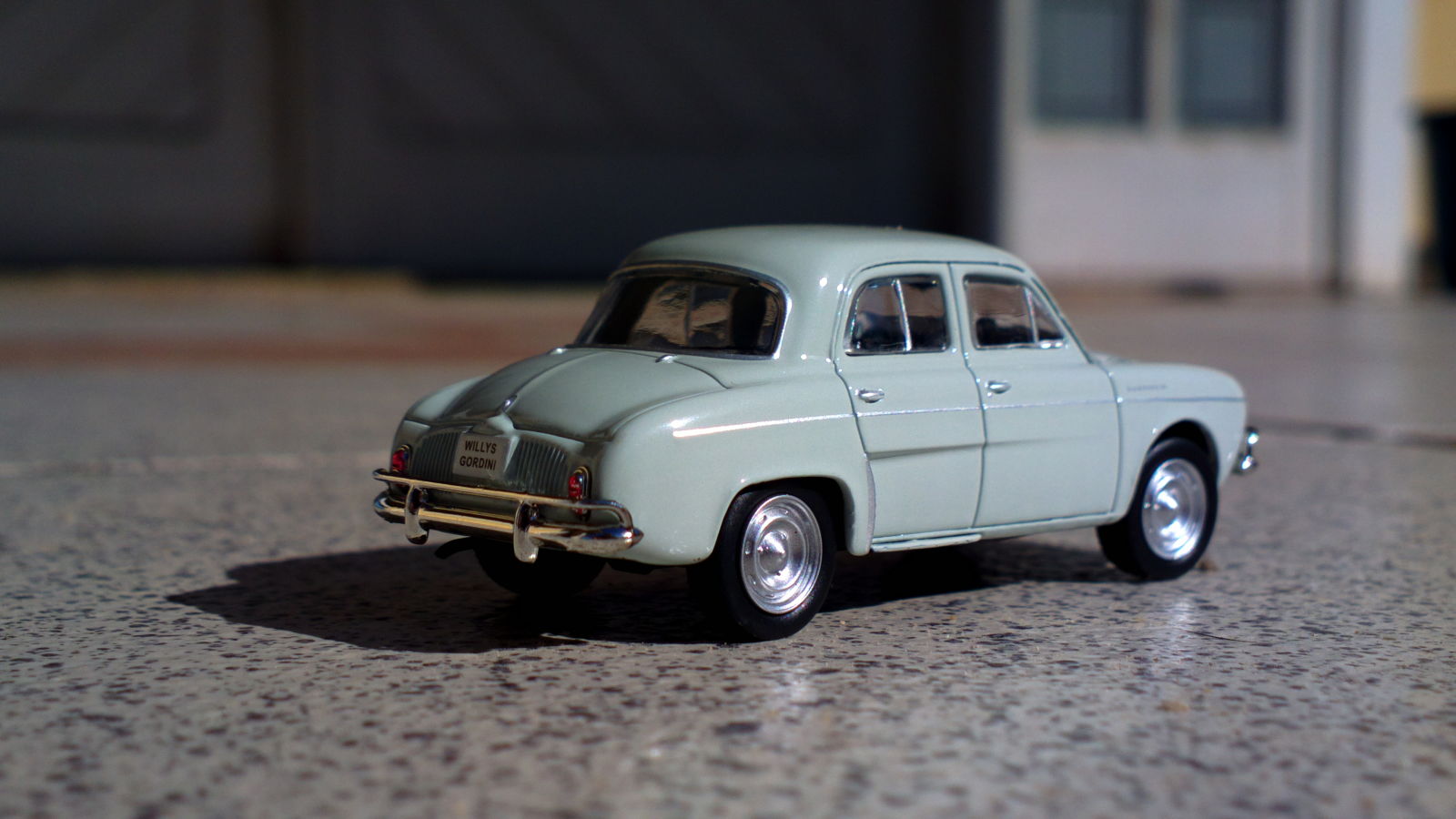
An even sportier version came in 1964, the Willys 1093. This version had the compression rate raised to 9.2:1 instead of the original 7.7:1, so the owners needed to fuel it with high octane gas. However the only high octane gas available here was for aviation, and it was colored blue to be different, so drivers needed the so famous “blue gas” to run properly. Even today there are people who praise the qualities of the blue gas, and still try to buy aviation gasoline from aeroports!
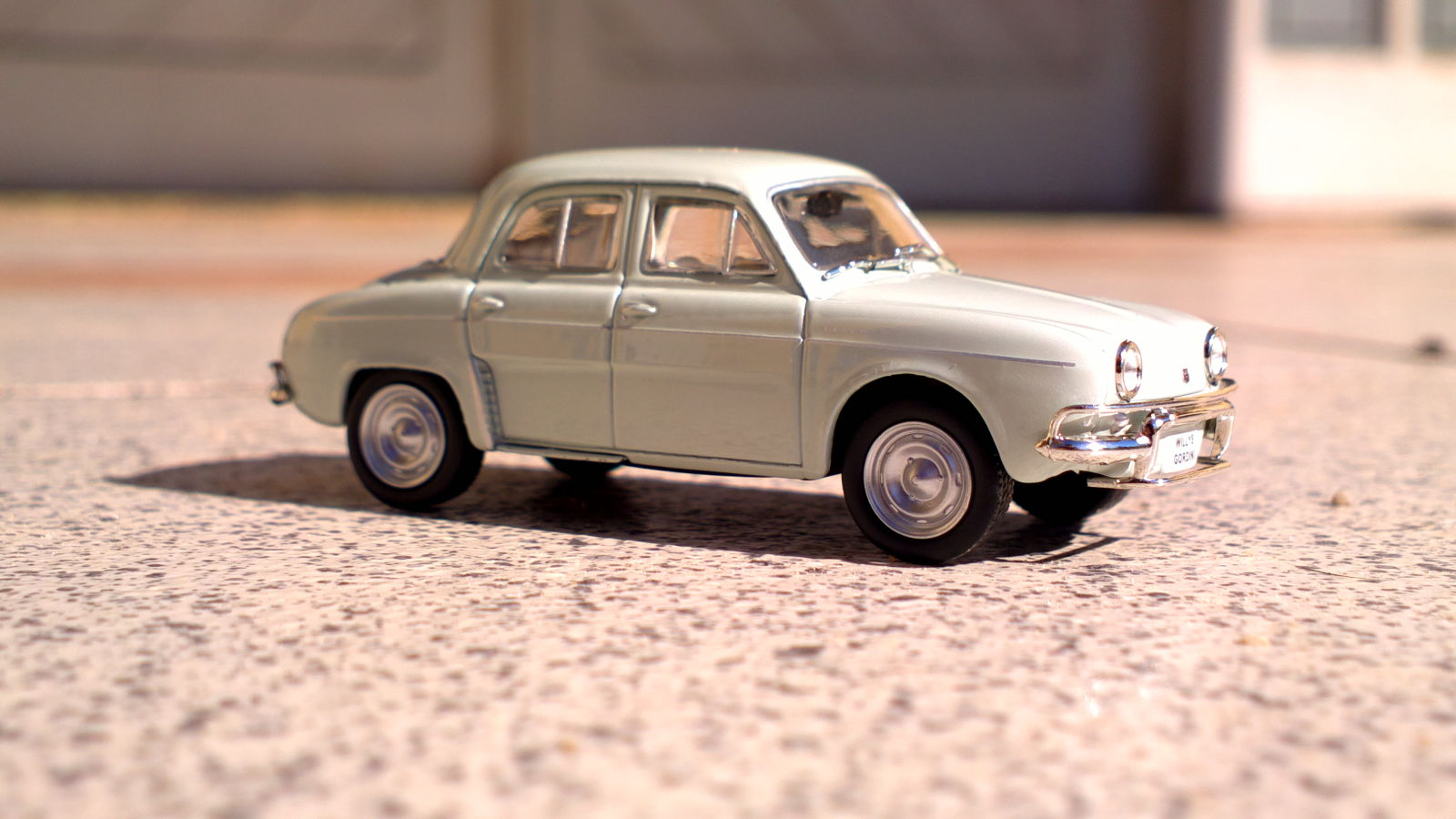
In 1964 a completely stripped version called the “Teimoso” (simply “Stubborn”) was introduced. It got this nickname because on a nonstop 50,000 km test one of the drivers rolled the car but it kept running! Willys called it a “stubborn” car for refusing to break, so the name stuck. The Teimoso was spartan to the extreme. There was no chrome, extremely simple finish, no glove box cover, no fuel gauge, no temp meter and a single tail light, that also illuminated the license plate! It costed only 52% of what a Gordini costed.

However, it didn’t lasted long. In 1966 and 1967 there were minor changes and in 1968 the production ended. It was around this time Ford bought Willys Overland, and took ownership of the Project M. In France, Project M became the Renault 12. In Brazil the Corcel, but this is a story for another day ;)
Bonus ads:
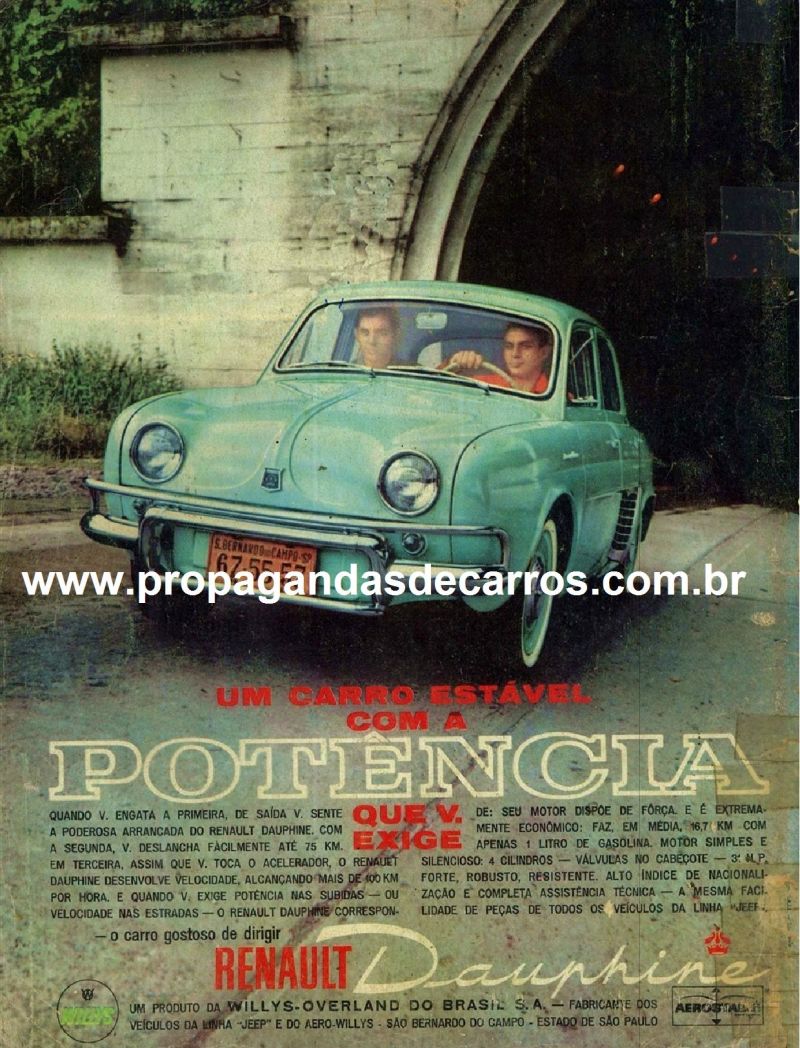
A stable car with the power you demand.
When you put into the first, from the start, you feel the powerful acceleration of the Dauphine, with the second you cruise easily to 75 km/h. At the third, right when you step on the gas pedal, the Dauphine develops its speed reaching more than 100 km/h. And when you demand power in the hills - or speed on the roads - the Dauphine corresponds: its engine has power. And it is extremely economical: It does, in the mean, 16.7 km with only 1 liter of gasoline. Simple and silent engine: 4 cylinders - OHC - 3 gears. Strong, robust, resistant, high index of nationalization and full fledged service - the same ease as all vehicles from the Jeep line.

A comfortable car with the solidity you demand
Hahahaha, Leite Glória! Desmancha sem bater - Brazilians from the time about this campaign.
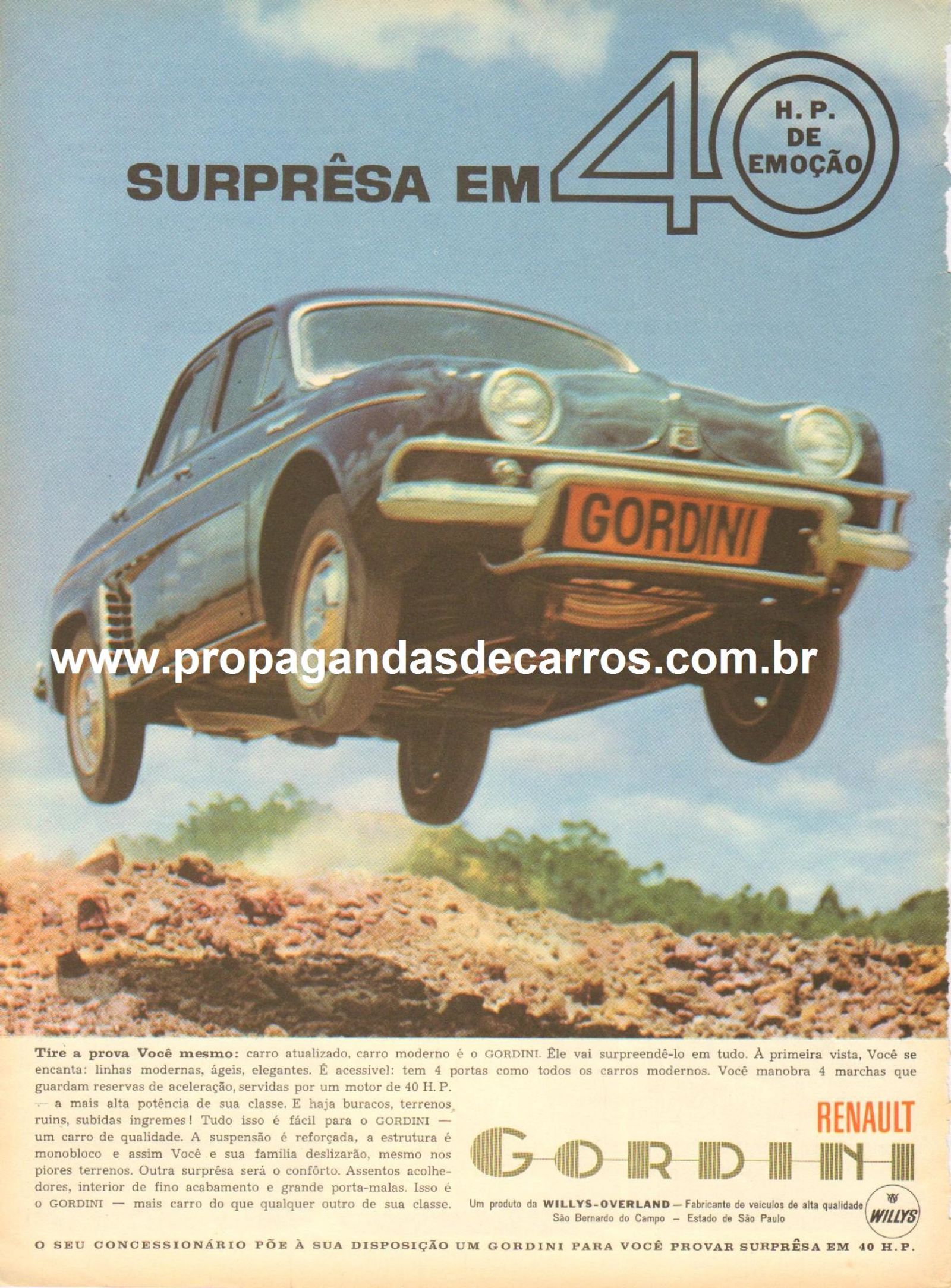
Surprise in 40 hp.
Take the proof yourself! An actual, modern car is the Gordini. It will surprise you in everything. At the first sight you’ll be enchanted: modern, agile, elegant lines. It is acessible: it has 4 doors like all modern cars (edu_petrolhead note: this was aiming at the Beetle, which had only 2 doors). You manobrate with 4 gears which manages the acceleration provided by a 40 h.p. engine - the highest power of its class. And never mind pot holes, bad terrains, steep hills! It is all easy for the Gordini - a quality car. The suspension is reinforced, the structure is monocoque so you and your family will glide, even in the worst grounds. Another surprise will be the comfort: Cozy seats, finely finished trim and a big trunk. This is the Gordini - more car than any other of its class.
Sources (in portuguese)